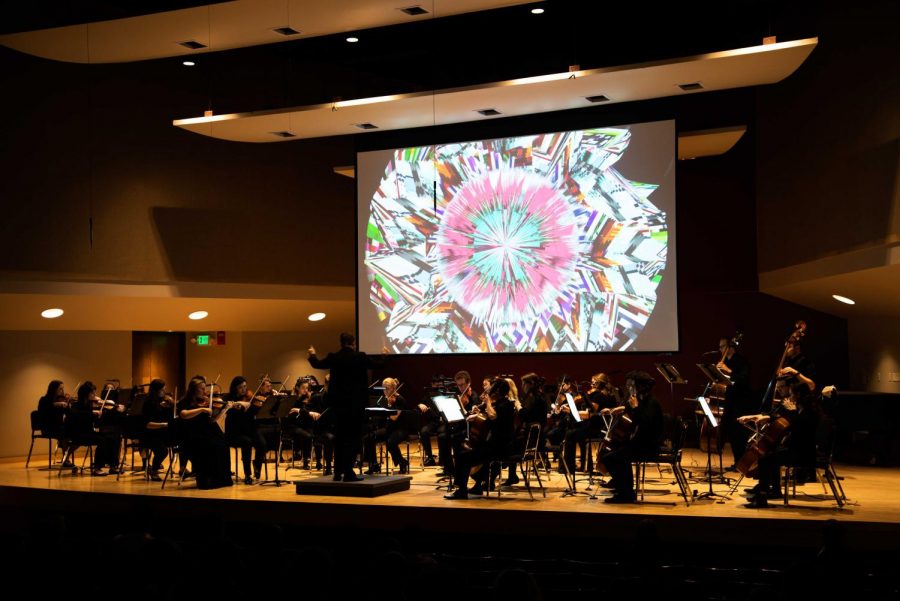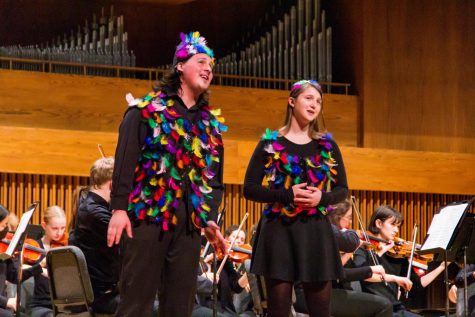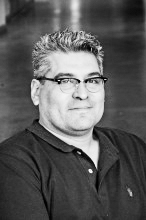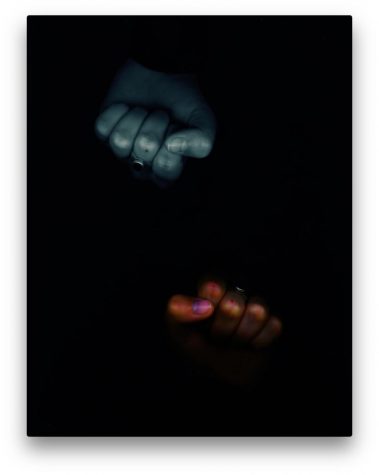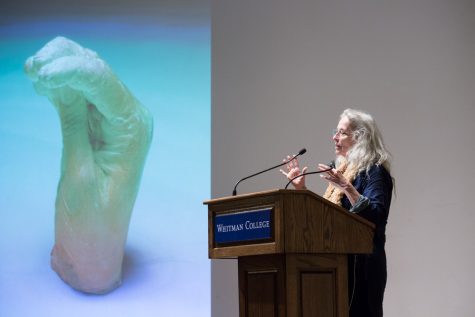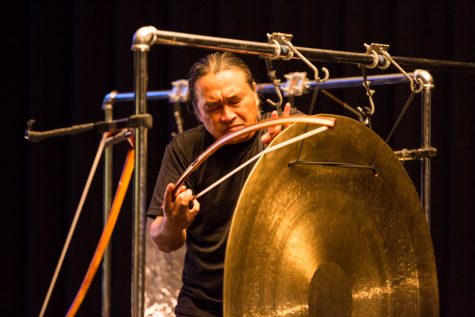Winter Orchestra Concert connects visual arts and music
February 20, 2020
Junior Grace Gutierrez, a first violinist in the Whitman orchestra, had never experienced anything like it in her three years playing at Whitman: as the orchestra played under dimmed lights, a screen behind them moved and pulsed in response to the sound. This was the work of Whitman’s Art Department Chair and Associate Professor of Art Justin Lincoln, who contributed a visual component to the orchestra’s winter concert, which occurred Friday, Feb. 14.
“I think it was [special] in that we’ve had dancers before, and that kind of visual aspect, but it almost felt like a different playing experience for us because the lights were dimmed, and the screen was there, so it almost felt like we were experiencing it too,” Gutierrez said. “if there’s dancers or a singer in front of us, we are ultimately doing our same job of engaging in the music, but this was also a visual engagement for us.”
The visual element, which consisted of angular, refracting shapes, was paired with the concert’s first piece, Caroline Shaw’s “Entr’acte.” The work was the result of “a year or two” of planning, according to Lincoln. It all began when Associate Professor of Music and Paul Garrett Fellow Paul Luongo suggested a collaboration between the orchestra and the art department based on some of the works highlighted on Lincoln’s Instagram. Last summer Lincoln began developing the kaleidoscopic program seen at the concert.
For Lincoln, the music played a large role in informing the visual.
“‘Entr’acte’ is kaleidoscopic and works, to my ears, by refraction instead of pure reflection,” Lincoln said. “Not just one mirror reflecting the world, but also mirrors reflecting other mirrors. It makes great use of fragments and complex patterns.”
This was Lincoln’s first time manipulating elements of the piece live for an audience, and he appreciated the opportunity. He hopes that it provided a new experience for audience members.
“I hope that the visuals didn’t overdetermine how the audience interprets the music,” Lincoln said. “Instead I hoped it allowed people to imagine their own connections between what they were hearing and seeing, and come to their own conclusions.”
The piece was followed by George Walker’s “Lyric for Strings” and Franz Joseph Haydn’s “Symphony no. 45”, the latter of which involved members of the orchestra gradually leaving the stage until only a string duet remained.
Luongo, who conducted the concert, said that the process of selecting the pieces for the concert was a matter of belief in each individual piece of music.
“Some people put their concerts together with themes—that is to say, that all the music will be aligned around a central idea,” Luongo said. “More often, especially with the Whitman orchestra, we don’t try to weave them all together, so this one was really just three pieces that, independently, we were excited to explore.”
According to Luongo, each piece brought different elements to the concert as a whole.
“Caroline Shaw offered an opportunity for collaboration with Professor Lincoln and the art department; the Walker is a fantastic work in its own right, but also a work from a marginalized composer, who we wanted to do our small part to shed some light on his music; and the Haydn, again, a piece that we believe in [and] really enjoy, but also provides some important curricular experiences to the students,” Luongo said.
For Gutierrez, the concert — and the first piece in particular — put into perspective the relevance of her work within the orchestra.
“I think I gained an appreciation for the relevance of what we do,” Gutierrez said. “To have someone come in and present this new piece of art that’s so important to them, and for us to be an integral part of that — really, ultimately, bringing it to life — that’s kinda neat.”
The introduction of the visual element clearly altered the experience of the piece, causing many to wonder about the implications of this addition.
“I found myself thinking about a lot of questions at the end, such as whether Caroline Shaw would’ve liked the edition that we did — [and] whether it would’ve mattered whether or not she liked [it],” Luongo said. “That was the main thing that I found myself taking away from the concert.”
Though in the grand scheme of things the Whitman orchestra has, as Luongo puts it, a “relatively small platform,” it was still able to re-contextualize the music it presents though this performance, unlocking new experiences for its audience.



